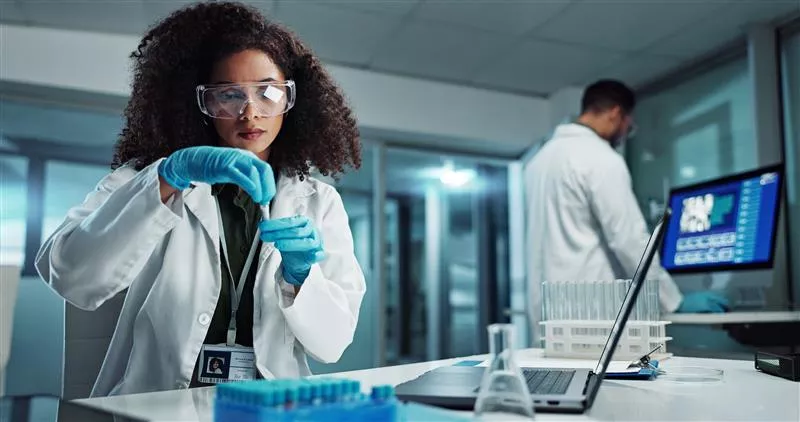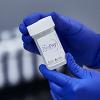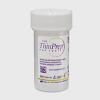Molecular Diagnostics in Vaginitis Testing, Elevating Accuracy & Efficiency

Vaginitis is a widespread yet complex gynecological condition, affecting up to 75% of women at least once in their lifetime, with nearly half experiencing recurrent infections.1 Traditional diagnostic methods, such as microscopy, culture, and pH assessment, pose challenges due to variability in interpretation, which can lead to inconsistent results and delayed treatment.
The three primary causes of vaginitis - bacterial vaginosis (BV), vulvovaginal candidiasis (VVC), and trichomoniasis (TV) - have overlapping symptoms, making clinical diagnosis unreliable. The Nugent scoring system, often regarded as the gold standard for BV diagnosis, is highly subjective. This leads to inconsistencies in interpretation between different technicians resulting in inappropriate or delayed treatment. An alternative solution has emerged that addresses these challenges. Molecular diagnostics assays offer an alternative with high sensitivity, specificity, and reproducibility. Studies indicate that molecular assays achieve a sensitivity of over 95% and specificity exceeding 97%, significantly outperforming traditional microscopy and culture-based methods.2
One sample, more answers: A game-changer in vaginitis diagnosis
Clinical data suggest that approximately 10–20% of vaginitis cases may involve co-infections, underscoring the need to identify clinically relevant targets in the patient sample. Multiplex molecular assays enable the simultaneous detection of multiple pathogens from a single patient sample and consequently have reshaped the landscape of vaginitis testing.
This is supported by several peer-reviewed studies which report that multiplex molecular methods detect significantly more co-infections compared to culture and microscopy. For instance, in a multicenter prospective study evaluating the Aptima® Bacterial Vaginosis (BV) and Aptima® Candida/Trichomonas Vaginitis (CV/TV) assays, investigators found that molecular testing uncovered more cases of co-infection than standard reference methods.2
While exact percentages vary, it is generally accepted that molecular assays outperform conventional diagnostics when it comes to identifying polymicrobial infections. Through this targeting of multiple pathogens from a single sample, clinicians can potentially reduce the risk of missed diagnoses and optimise patient care.
Speed vs. accuracy: The false compromise in vaginitis testing
Speed and accuracy need not be mutually exclusive in diagnostic testing. Many rapid, point-of-care methods sacrifice sensitivity for shorter turnaround times, increasing the likelihood of missed infections and suboptimal treatment. By contrast, molecular diagnostics can deliver fast results without compromising diagnostic precision. For example, laboratories can achieve both a quick turnaround and high analytical sensitivity in a single platform such as the Panther® system, which provides continuous access and walkaway processing across a broad molecular portfolio.5
Such efficiency is essential for effective antimicrobial stewardship, as timely and accurate diagnoses help clinicians initiate the most appropriate therapy and reduce unnecessary antibiotic use.
The cost of inefficiency: How outdated vaginitis testing burdens labs
Traditional diagnostic workflows demand substantial resources and have a number of inefficiencies, driving up operational costs. These include:
- High labour demands as microscopy and culture often require intensive manual processing, leading to greater technician workloads and labour expenses.
- Higher operational expenses such as running multiple diagnostic platforms entails more equipment, consumables, space and maintenance costs.
- Extended turnaround times as delays in results slow down clinical decision-making and can increase healthcare expenses through complications or follow-up visits.
- Higher labour costs varying between facilities. Numerous labs transitioning to PCR-based vaginitis testing report substantial decreases in labour costs - commonly in the double-digit percentage range - because automation reduces manual steps and technician interventions.3,6
Clinical adoption underscores the benefits of molecular testing
An example of the benefit of switching to molecular diagnostics was seen at a large diagnostic laboratory. When it transitioned its vaginitis testing to the Hologic Panther system, it cut its turnaround times from 72 hours to under 24 hours while increasing throughput and reducing the number of full-time employees required.3 This was achieved through consolidating STI and vaginitis testing onto the fully automated random-access molecular platform.4
Addressing workforce challenges in diagnostics
The growing demand for diagnostics can only be met with a workforce that has both the capacity and the necessary skills. The Institute of Biomedical Science (IBMS) recognises the importance of biomedical scientists in bridging the medical skills gap and has received funding to support post-registration professional qualifications.7 Additionally, automation and integration of molecular diagnostic platforms contribute to workforce efficiency, reducing reliance on skilled personnel while maintaining high accuracy.
Future-proofing vaginitis diagnostics: Preparing for the next generation
As diagnostic needs continue to evolve, laboratories must adopt innovations that enhance efficiency, accuracy, and adaptability. The future of vaginitis diagnostics relies on scalable and automated solutions that can handle growing demand while optimising workflow and resource use. By integrating these advancements, labs can improve diagnostic precision, streamline operations, and ensure they are equipped to meet future healthcare challenges.
2797
Hologic BV, Da Vincilaan 5, 1930 Zaventem, Belgium.
Notified Body number wherever applicable
Sobel JD. Vulvovaginal candidosis. The Lancet. 2007;369(9577):1961–71.doi: 10.1016/S0140-736(07)60917-9 PMID: 17560449
Schwebke JR, Taylor SN, Ackerman R, et al. Clinical Validation of the Aptima Bacterial Vaginosis and Aptima Candida/Trichomonas Vaginitis Assays: Results from a Prospective Multicenter. J Clin Microbiol. 2020 Jan 28;58(2):e01643-19. doi: 10.1128/JCM.01643-19
Spectra Diagnostic. In partnership with HOLOGIC, Cerballiance optimizes technical activity and rendering vaginal swab result. Oct 2022. Available at https://spectradiagnostic.com/wp-content/uploads/2022/09/sd022_HOLOGIC_Cerballiance.pdf.
Van Der Pol B, Lillis RA, Taylor SN, Ladd J, Frye B, Rivero HR, Nye MB, Getman DK, Eisenhut C, Gaydos CA. Clinical Evaluation of the Automated Aptima Mycoplasma genitalium Assay on the Panther System. J Clin Microbiol. 2020;58(7):e00419-20. doi: 10.1128/JCM.00419-20
Taylor SN, Lillis RA, Nyirjesy P, Body BA, Rivers CA, Martin DH, Sweeney YM, Nye MB, Shin G, Welsh DA, Schwebke JR. Comparison of Aptima BV and Affirm VPIII in the detection of bacterial vaginosis and associated vaginal microflora.J Clin Microbiol. 2022;60(4):e02373-21. Epub 2022 Mar 2. doi: 10.1128/JCM.02373-21
Gaydos CA, Rizzo-Price PA, Deans R, Hardick NM, Barnes MR, Marlowe E, Kontowicz E, Hook EW 3rd, Harrer BD, Carson J, Quinn NE, Hardick J, Jang D, Smith B. The cost-effectiveness of a rapid, multiplexed, molecular test to diagnose infectious vaginitis in women with vaginal symptoms. J Clin Microbiol. 2017;55(10):3109–3118. Epub 2017 Jul 26. doi: 10.1128/JCM.00720-17
Institute of Biomedical Science (IBMS) Long-Term Biomedical Scientist Workforce Plan https://www.ibms.org/resources/documents/ibms-long-term-workforce-plan/ibms-long-term-biomedical-scientist-workforce-plan-final.pdf
















